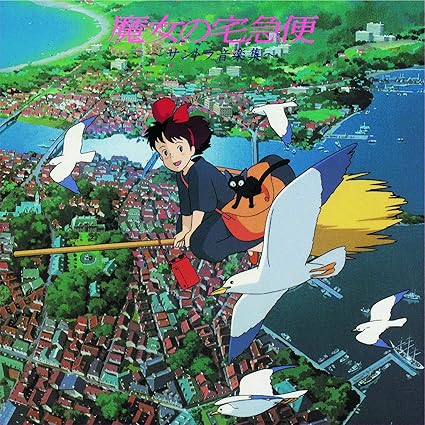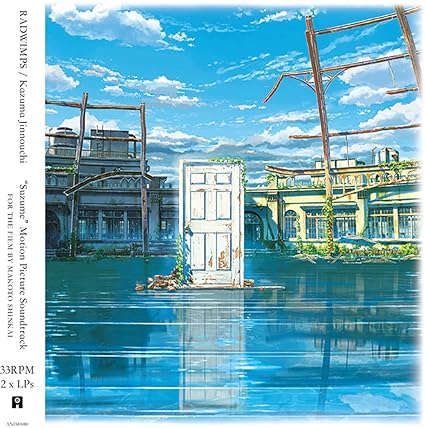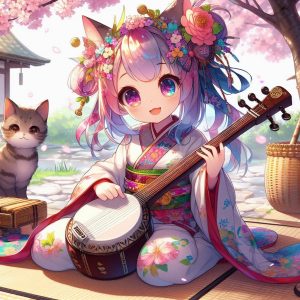Author: ShiroiYozora 17.09.2024
This site contains affiliate links to products. We may receive a commission for purchases made through these links. Learn more.
How Anime Soundtracks Influence Modern Japanese Music
Contents
- 1 How Anime Soundtracks Influence Modern Japanese Music
- 2 Music Zone!
The enchanting world of anime has captivated audiences for decades, but its influence extends far beyond the visual realm. Anime soundtracks have become a powerful force in shaping the landscape of modern Japanese music, creating a ripple effect that resonates through the industry and beyond. 🎵🎨
From the iconic opening themes that become instant earworms to the emotive background scores that elevate storytelling, anime music has carved out a unique niche in the hearts of fans and musicians alike. But how exactly has this genre-defying phenomenon impacted the broader spectrum of Japanese music? And what role does it play in the global music scene? 🌏🎶
As we delve into the evolution of anime soundtracks, their influence on J-Pop, and their expanding global reach, we'll uncover the technical innovations and digital transformations that have propelled this art form to new heights. Join us on a melodious journey through the fascinating intersection of anime and music, where creativity knows no bounds and every note tells a story. 🎼✨

The Evolution of Anime Soundtracks
The journey of anime soundtracks mirrors the growth of the medium itself, evolving from simple melodies to intricate musical compositions that captivate audiences worldwide.
From simple melodies to complex orchestrations
Anime soundtracks have undergone a remarkable transformation over the decades:
- Early days: Simple, repetitive tunes using basic synthesizers
- Mid-era: Introduction of more diverse instruments and genres
- Modern era: Full orchestral scores, electronic elements, and genre-blending compositions
This progression reflects the increasing budgets, technological advancements, and growing artistic ambitions within the anime industry.
Iconic anime soundtracks that left a lasting impact
Several anime soundtracks have become cultural touchstones, influencing not only the anime industry but also broader musical landscapes:
- "Akira" (1988) - Geinoh Yamashirogumi's haunting, percussive score
- "Cowboy Bebop" (1998) - Yoko Kanno's jazz-infused soundtrack
- "Ghost in the Shell" (1995) - Kenji Kawai's ethereal, choral-driven music
- "Your Name" (2016) - RADWIMPS' emotional rock ballads
These soundtracks demonstrated the power of music in enhancing storytelling and creating memorable viewer experiences.
Watch and enjoy the music.
Key composers who shaped the genre
Visionary composers have played a crucial role in elevating anime soundtracks to new heights:
- Yoko Kanno: Known for genre-defying compositions in "Cowboy Bebop" and "Ghost in the Shell: Stand Alone Complex"
- Joe Hisaishi: Renowned for his long-standing collaboration with Studio Ghibli
- Hiroyuki Sawano: Recognized for epic, grandiose scores in "Attack on Titan" and "Kill la Kill"
These artists have pushed boundaries, introducing innovative musical styles and techniques that have become hallmarks of modern anime soundtracks.
As anime music continued to evolve, its influence began to extend beyond the confines of animation, shaping the broader landscape of Japanese popular music.
Buy Studio Ghibli Soundtracks on CD!

Anime Music's Influence on J-Pop
How anime opening and ending themes shape pop music trends
Anime opening and ending themes have become powerful trendsetters in the J-Pop industry. These catchy tunes, often performed by popular artists, serve as a gateway for viewers to discover new music and artists. The repetitive nature of these themes, played at the beginning and end of each episode, ensures high exposure and memorability, influencing listeners' musical preferences.
The rise of anisong as a distinct musical category
Anisong, or anime songs, has emerged as a unique genre within the Japanese music scene. This category encompasses:
- Opening and ending themes
- Insert songs
- Character songs
- Background music
The popularity of anisong has led to dedicated concerts, festivals, and chart rankings, solidifying its position as a mainstream music genre.
Incorporation of anime-style elements in J-Pop production
J-Pop producers have taken note of anime music's success, incorporating elements that resonate with fans:
- Energetic and upbeat tempos
- Emotionally charged lyrics
- Fusion of electronic and traditional instruments
- Dynamic vocal performances
These characteristics, originally prominent in anime soundtracks, have become staples in modern J-Pop productions, blurring the lines between anime music and mainstream pop.
Buy Anime Soundtracks on CD!
Crossover artists between anime and mainstream music
The intertwining of anime and J-Pop has given rise to a new breed of versatile artists who seamlessly transition between both worlds. Many mainstream J-Pop artists now actively seek opportunities to perform anime theme songs, recognizing the exposure and fan base it brings. Conversely, artists who gain popularity through anime music often leverage this success to launch careers in the broader J-Pop industry, further cementing the symbiotic relationship between anime soundtracks and modern Japanese music.

The Global Reach of Anime Soundtracks
As anime continues to captivate audiences worldwide, its soundtracks have become increasingly influential beyond Japan's borders. This global appeal has led to significant impacts on the international music scene, particularly in Western countries.
Influence on Western musicians and composers
Anime soundtracks have inspired countless Western artists and composers, leading to:
- Incorporation of anime-style orchestrations in film and video game scores
- Collaborations between Japanese and Western musicians on anime-inspired projects
- Increased use of Japanese instruments and musical techniques in Western compositions
Anime music concerts and events worldwide
The popularity of anime soundtracks has given rise to a thriving international concert scene:
- Live orchestra performances of iconic anime themes
- Anime music festivals featuring both Japanese and local artists
- Cosplay-friendly events that combine music and fan culture
These events not only celebrate anime music but also serve as cultural bridges, fostering understanding and appreciation of Japanese artistry.
International recognition and popularity
Anime soundtracks have gained considerable recognition on the global stage:
- Streaming platforms now feature dedicated anime music playlists
- Anime composers are increasingly invited to international film and music festivals
- Original anime soundtracks frequently top digital music charts in various countries
This widespread acclaim has solidified anime music's position as a distinct and respected genre in the global music landscape. As a result, the influence of anime soundtracks continues to grow, shaping musical trends and inspiring artists across cultures and continents.

Technical Innovations in Anime Music Production
The realm of anime soundtracks has been a hotbed of musical innovation, pushing the boundaries of traditional composition and production techniques. This creative approach has significantly influenced the broader Japanese music industry, introducing new sounds and methods that have become staples in modern J-pop and beyond.
Experimental Approaches to Scoring and Arrangement
Anime composers have consistently demonstrated a willingness to experiment with unconventional scoring and arrangement techniques. This innovative spirit has led to the development of unique soundscapes that perfectly complement the visual storytelling of anime. Some notable experimental approaches include:
- Blending multiple genres within a single track
- Using unconventional time signatures and rhythmic patterns
- Incorporating ambient sounds and field recordings into musical compositions
- Employing leitmotifs and thematic variations to enhance narrative continuity
Integration of Traditional Japanese Instruments
One of the most striking features of modern anime soundtracks is the seamless integration of traditional Japanese instruments with contemporary musical elements. This fusion has not only created a distinctive sound but has also helped preserve and promote traditional Japanese music. Key aspects of this integration include:
- Incorporating instruments like the koto, shamisen, and taiko drums into orchestral arrangements
- Using traditional scales and modes alongside Western harmonies
- Adapting playing techniques of traditional instruments for modern musical contexts
- Collaborating with master musicians of traditional Japanese instruments
Use of Electronic and Synthesized Sounds
The advent of electronic music production has opened up new possibilities for anime soundtrack composers. By embracing synthesized sounds and digital production techniques, they have created futuristic soundscapes that often become as iconic as the anime visuals themselves. This approach has led to:
- Creation of unique, character-specific sound palettes
- Development of immersive, otherworldly atmospheres through layered synthesizer textures
- Exploration of glitch, granular synthesis, and other cutting-edge sound design techniques
- Integration of electronic beats and rhythms with orchestral elements
These technical innovations in anime music production have not only elevated the art form but have also influenced the broader landscape of Japanese popular music. As we explore further, we'll see how these advancements have contributed to the global appeal of anime soundtracks.
Create your own Anime music!

Anime Soundtracks in the Digital Age
The digital revolution has fundamentally transformed the landscape of anime soundtracks, propelling them into new realms of accessibility and influence. This shift has not only changed how fans engage with anime music but has also reshaped the industry's approach to production and distribution.
The Role of Social Media in Promoting Anime Music
Social media platforms have become powerful tools for promoting anime soundtracks:
- Twitter and Instagram: Artists and studios use these platforms to announce new releases and share behind-the-scenes content.
- TikTok: Short clips featuring anime music have gone viral, introducing soundtracks to wider audiences.
- YouTube: Dedicated channels for anime music videos (AMVs) have millions of subscribers, showcasing the enduring popularity of these soundtracks.
Collaborations Between Anime Studios and Music Labels
The digital age has fostered unprecedented collaborations:
- Cross-promotional campaigns between streaming services and record labels
- Joint social media strategies to build hype for upcoming anime releases and their soundtracks
- Exclusive digital releases of soundtrack collections on specific platforms
Impact on Music Discovery and Fan Engagement
Digital platforms have revolutionized how fans discover and interact with anime music:
- Recommendation algorithms on streaming services expose listeners to a wider range of anime soundtracks.
- Online communities and forums facilitate discussions and sharing of favorite tracks.
- Digital remixes and covers allow fans to creatively engage with anime music.
Streaming Platforms and Increased Accessibility
The rise of music streaming services has dramatically increased the accessibility of anime soundtracks:
- Platforms like Spotify and Apple Music now feature extensive libraries of anime music.
- Region-specific restrictions are becoming less common, allowing global access to Japanese anime soundtracks.
- High-quality audio streaming ensures fans can enjoy the intricate production of modern anime music.
This digital transformation has not only broadened the reach of anime soundtracks but has also influenced their creation, with composers and producers now considering the digital landscape in their artistic choices.
Conclusion:
Anime soundtracks have undeniably shaped the landscape of modern Japanese music, evolving from simple background scores to influential cultural phenomena. Their impact extends far beyond the realm of animation, permeating J-Pop and reaching global audiences. The fusion of traditional Japanese elements with contemporary styles has created a unique sonic identity that resonates with listeners worldwide.
As technology continues to advance, anime soundtracks are at the forefront of musical innovation. From sophisticated production techniques to digital distribution platforms, these compositions are pushing the boundaries of creativity and accessibility. The enduring legacy of anime soundtracks serves as a testament to their artistic value and cultural significance, solidifying their position as a vital force in the ever-evolving world of Japanese music.

Music Zone!
CDs and More!
Blog Posts!
Shiroi Castle is a participant in the Amazon Services LLC Associates Program, an affiliate advertising program designed to provide a means for sites to earn advertising fees by advertising and linking to Amazon.com. Amazon, the Amazon logo, AmazonSupply, and the AmazonSupply logo are trademarks of Amazon.com, Inc., or its affiliates.
Some of the graphics used to design the website has been created by Freepik www.freepik.com, using Adobe Firefly AI or Microsoft Designer.
























